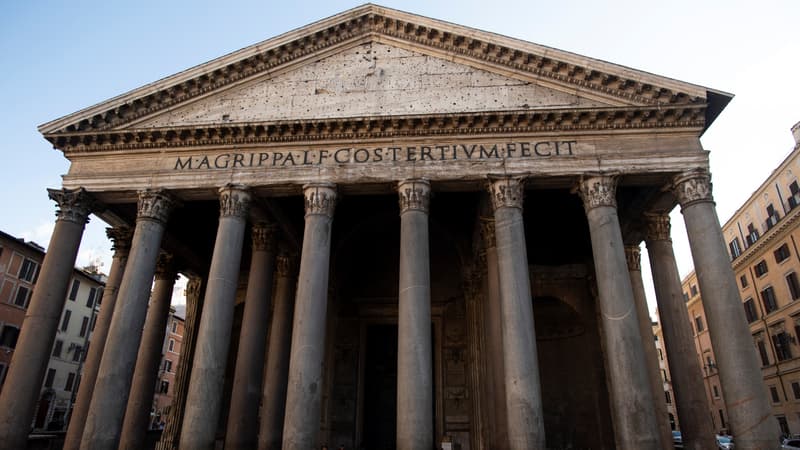How did Roman constructions, such as the aqueducts or the Pantheon in Rome, stand the test of time so well? This question has tormented experts for a long time.
American and European researchers believe they have finally discovered the secret to the longevity of these architectural wonders, approximately 2,000 years old: a concrete capable of repairing itself.
While some modern buildings fall into disrepair after only a few decades, these scientists hope their discovery could help reduce the environmental and climate impact of concrete production, which generates significant greenhouse gas emissions.
Until now, the strength of Roman concrete was attributed to one ingredient: volcanic ash from the Bay of Naples region of Italy, which was shipped throughout the Roman Empire for use in construction.
The shiny white lumps “not present in modern concrete”
But this time the researchers focused their attention on the presence of another feature: tiny bright white pieces of lime, another ingredient used to design concrete.
“Since I started working in Roman concrete, I have always been fascinated” by the presence of these pieces, says Admir Masic, co-author of this study published in the journal, in a press release. Progress of science and professor at the prestigious Massachusetts Institute of Technology (MIT) in the United States.
“They’re not present in modern concrete, so why were they in the old one?”
Previously, experts thought that these small pieces were the result of poor mixing of the mixture or poor quality raw materials.
But by examining, using advanced imaging techniques, the concrete of a wall in the town of Privernum in Italy, the researchers discovered that these small white pieces were actually calcium carbonate, formed at very high temperatures.
quicklime
They came to the conclusion that the lime was not incorporated (or not only) by mixing it with water, as previously thought, but in the form of quicklime.
According to the researchers, it is this “hot mix” that gives this concrete its amazing strength.
Indeed, when the cracks appear, the rainwater that comes into contact with the concrete produces a saturated calcium solution, which is then recrystallized into calcium carbonate, which makes it possible to fill the cracks.
To verify this hypothesis, the team of scientists made concrete samples using the same process, which they then deliberately cracked and poured water over. Result: After two weeks, the concrete was fully repaired. Another sample produced without quicklime was cracked.
In the future, the researchers want to try to commercialize this concrete with the modified composition.
Source: BFM TV


